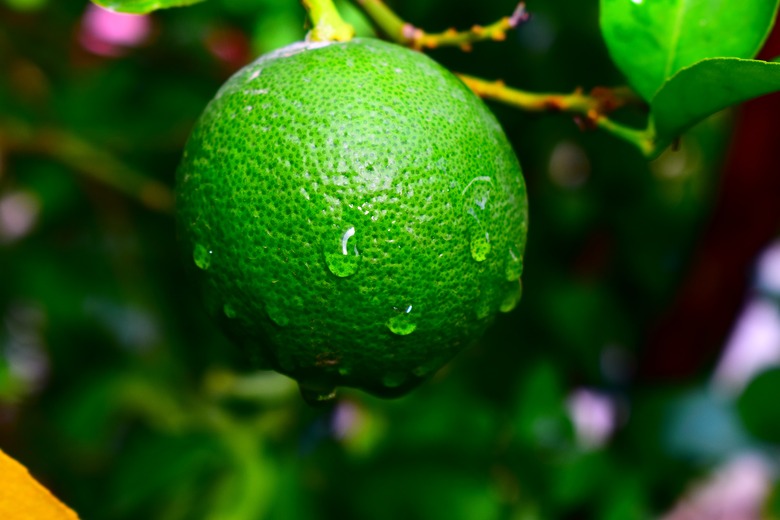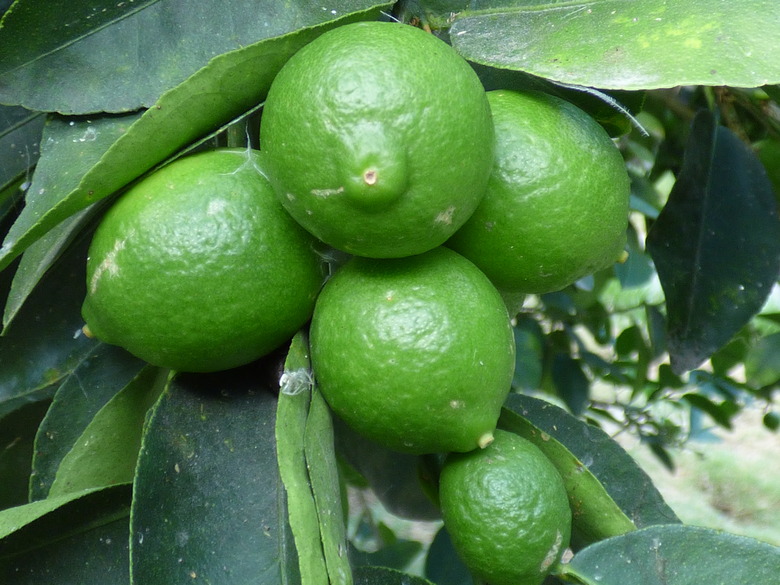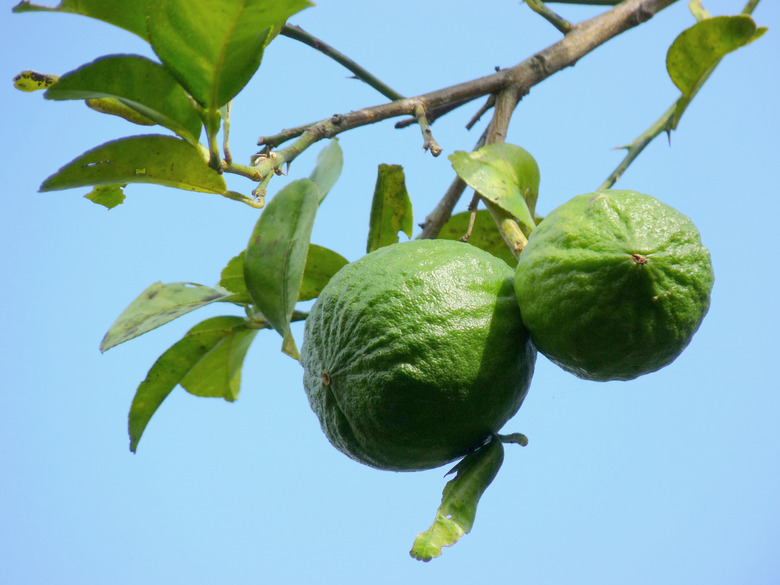The History Of The Lime
The history of the lime (Citrus spp.) encompasses a culturally diverse parentage with numerous familial descendants that branch off the main family tree, not unlike a human heritage. As a hybrid of other citrus fruits, lime fruit has progenitors from Malaysia, Indonesia, Myanmar and China.
From its early beginnings in these and other countries, the lime has traversed the globe to become a citrus fruit in commercial production as well as a favorite in backyard orchards across USDA plant hardiness zones 9 through 11.
Lime Scientific Name and Family
With other citrus plants, lime belongs to the rue plant family (Rutaceae). Plants in this family include herbs, shrubs and trees that have oil glands with strongly scented flowers and/or fruits.
As a member of the Citrus genus, lime does not populate a singular species; instead, it represents many branches on its family tree. Each species name designates a particular lime, even though there may be more than one common name for each species.
The ubiquitous lime found in grocery stores year-round is the Persian lime (Citrus x latifolia), also called Tahiti lime or Bearss lime. Another common species is the Key lime (Citrus x aurantiifolia), also called Mexican lime. The "x" in the scientific name (pronounced as "by" and not "x") means that these are hybrids, which are the result of crossing different species.
Both these species produce fruits that are 1 to 3 inches in length and width, but the Persian lime is slightly oval-shaped, compared to the Key lime, which is rounder with a thinner rind.
General History of the Lime
The genetic makeup of different types of citrus fruits is remarkably similar because of their origins in only a few species. It's because of this restricted gene pool and the resulting sexual compatibility that citrus fruits have the ability to mutate through random natural crossing as well as intentional human breeding.
Research points to the origin of limes in Malaysia as a hybrid citrus fruit, although one of the first countries to cultivate citrus was India. The popularity of limes inevitably led to their cultivation in other suitable climates, including Asia, India, China, Brazil and Tahiti.
Eventually, lime trees were introduced to the U.S., where trees flourished in the warm climates of Florida and California.
Persian/Tahiti/Bearss Lime (Citrus x latifolia)
The common name Tahiti lime isn't a nod to this plant's origins but a commonly accepted historicity of how it found its way to California from Tahiti. Even though its exact geographical origin is somewhat of a mystery, this lime likely hails from Asia.
Unlike some types of citrus trees, this species has nearly thornless stems. Growing on small trees with a potential 20-foot height and spread when mature, these limes—as all limes do—mature to yellow, although they're almost always picked when green. Green limes have a sour taste, but ripe yellow fruits have a sweet lime taste.
Key/Mexican Lime (Citrus x aurantiifolia)
Key limes were commercially grown in the Florida Keys during the 19th century, giving rise to their common name, which persists even though Florida's commercial production of these fruits today is minimal.
Although they're smaller than Persian/Tahiti limes, Key lime fruits are seedier. Trees are also smaller than the Persian/Tahiti lime, reaching a potential mature height around 12 feet.
Watch for spines when picking fruit, because this tree's branches are thorny. Although there are spineless cultivars, the fruit on thornless trees do not produce as many fruits.
References
- University of California Riverside: Bearss Lime
- University of California Cooperative Extension Master Gardeners of Sacramento County: The Citrus Family Tree (Excerpt from National Geographic Magazine, February 2017
- North Carolina State University: The History of Mandarins and Limes and Their Cultural Impact
- North Carolina State Extension: Citrus x Aurantiifolia
- North Carolina State Extension: Citrus x Latifolia
- University of Florida IFAS Extension: Key Lime Growing in the Florida Home Landscape


